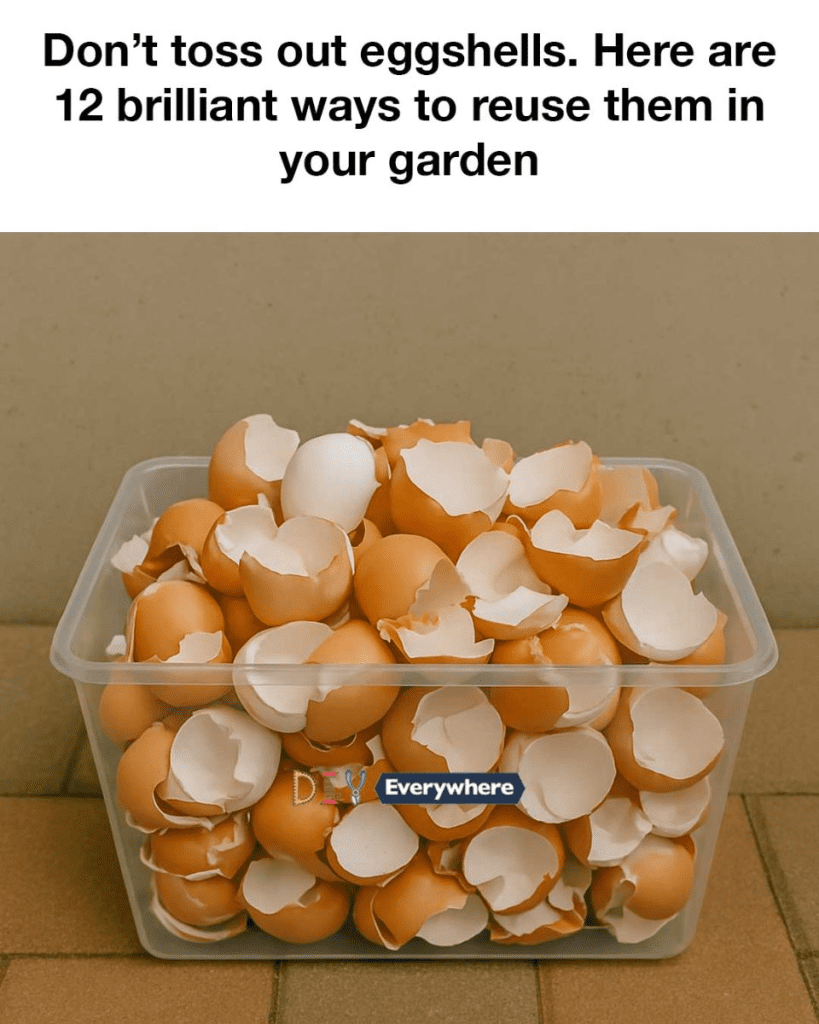
Eggshells are often discarded as kitchen waste, but they hold untapped potential for gardeners. These calcium-rich shells can be transformed into a valuable resource for your garden, reducing waste and enhancing plant health. By understanding the various ways to repurpose eggshells, you can contribute to sustainable gardening practices while improving your garden’s vitality.
The Benefits of Using Eggshells in Gardening
Eggshells are composed primarily of calcium carbonate, a compound that is essential for plant growth. This makes them an excellent natural amendment for garden soil. Additionally, their abrasive texture can deter pests, and their slow decomposition rate provides a long-lasting source of nutrients. Incorporating eggshells into your gardening routine can lead to healthier plants and a more productive garden.
How to Prepare Eggshells for Garden Use
To prepare eggshells for use in the garden, start by rinsing them thoroughly to remove any residual egg white or yolk. Once clean, allow the shells to dry completely. You can then crush them into small pieces or grind them into a fine powder using a mortar and pestle or a food processor. This preparation ensures that the nutrients in the eggshells are more readily available to plants.
1. Eggshells as Natural Fertilizer
Crushed eggshells are rich in calcium carbonate (about 95%) and small amounts of magnesium, phosphorus, and potassium. To use them:
How: Rinse and dry 10–12 eggshells, then crush them finely.
Application: Sprinkle about 1 tablespoon per plant around the base. For garden beds, use 1 cup per square foot of soil.
Best for: Tomatoes, peppers, eggplants, and other calcium-loving crops.
2. Using Eggshells to Deter Pests
Sharp edges of eggshells deter soft-bodied pests like slugs and snails.
How: Use 5–6 crushed eggshells per square foot.
Application: Create a ring around plant stems about 2 inches wide and ½ inch thick.
Reapply after rain or watering.
3. Enhancing Compost with Eggshells
Eggshells improve compost nutrient balance and pH.
How: Rinse and crush before adding.
Ratio: Add about 12 eggshells per cubic foot of compost.
Tip: Grinding shells into powder accelerates decomposition.
4. Eggshells for Seed Starters
Biodegradable and nutrient-rich seedling containers.
How:
Crack eggs near the top, rinse, and dry.
Fill each shell half with moist potting mix.
Plant 1–2 seeds per shell.
Transplanting: Crush the shell lightly before planting to allow root expansion.
5. Creating Eggshell Tea for Plants
Quick calcium boost through water-soluble nutrients.
Recipe:
Boil 1 gallon of water.
Add 10–12 crushed eggshells.
Let steep for 24 hours, then strain.
Use: Water plants once every 2–4 weeks.
6. Eggshells as a Calcium Supplement for Soil
Helps prevent blossom end rot.
How:
Dry and grind 1 dozen eggshells into a fine powder using a blender or coffee grinder.
Mix into 1 square foot of soil at planting depth (~6 inches).
Tip: Incorporate in early spring for best results.
7. Improving Soil Aeration with Crushed Eggshells
Improves texture and drainage.
How: Crush shells into coarse pieces.
Ratio: Mix 1–2 cups of crushed eggshells per square foot into clay or compacted soil.
Best Time: During soil preparation or before planting.
8. Eggshells in Vermicomposting
Aids in worm digestion and pH balance.
Preparation:
Rinse, dry, and crush finely (powder is ideal).
Use 1 tablespoon per 1 lb of food scraps.
Frequency: Add weekly or as needed to prevent acidity buildup.
9. Using Eggshells to Clean Garden Tools
Natural scrub with gentle abrasiveness.
Mix: Combine ½ cup crushed shells with 2 tablespoons of water or vinegar.
Use: Apply paste to tools with a cloth or sponge; scrub rust and dirt gently.
Rinse thoroughly and dry.
10. Eggshells as a Decorative Mulch
Combines aesthetics with function.
How:
Use roughly crushed shells.
Spread a ¼ inch layer around plants.
Coverage: Approximately 1 dozen eggshells per square foot.
Benefits: Retains moisture, deters pests, and suppresses weeds.
11. Eggshells in Bird Feeders
Adds calcium to bird diets, especially for nesting birds.
Sterilize: Bake shells at 250°F (120°C) for 10 minutes.
Crush: Break into pea-sized pieces.
Mix: Add 1 part eggshells to 3 parts birdseed.
Place: In a shallow dish or feeder.
12. Crafting Garden Art with Eggshells
Eco-friendly creative projects.
Ideas:
Create mosaics for stepping stones using colored shell fragments.
Decorate pots or frames with glued-on eggshell patterns.
Tip: Use egg dye or food coloring for a vibrant look.
Seal with outdoor-grade clear sealant for longevity.
Conclusion: Embracing Sustainable Gardening Practices
Reusing eggshells in the garden is a simple yet effective way to embrace sustainable gardening practices. By reducing waste and enhancing soil health, you contribute to a more eco-friendly environment. These creative uses for eggshells demonstrate that even the smallest changes can have a significant impact on your garden’s productivity and sustainability.


